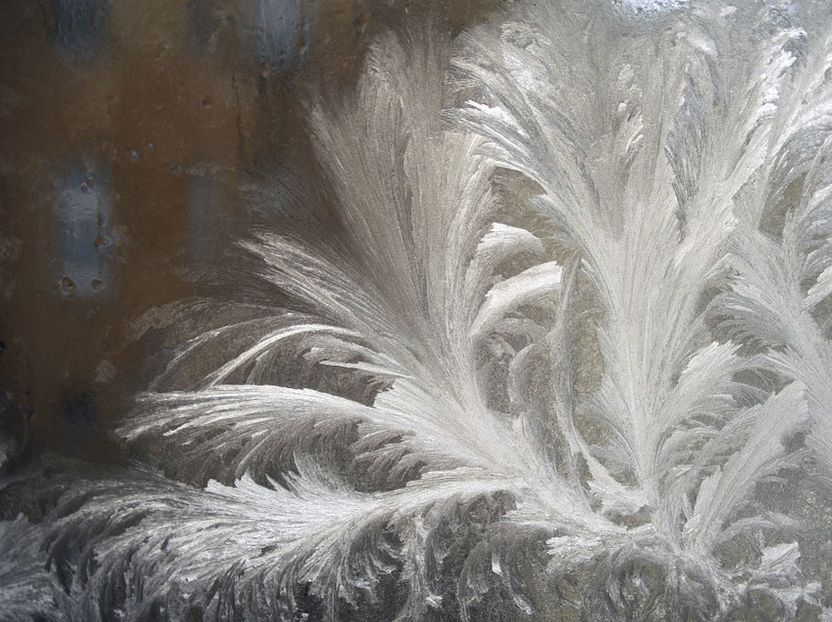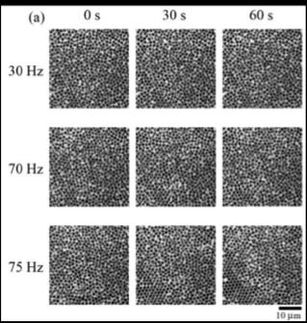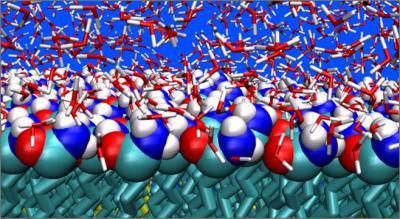Model could shatter a mystery of glass
Advertisement
A glass is a curious material in between liquid and solid states of matter, but eventually glass always yields to its solid proclivity by settling into the ordered patterns of a crystal. Or so it was thought.

karolinda; pixabay.com; CC0
Princeton University researchers have developed a computational model for creating a "perfect glass" that never crystallizes — even at absolute zero. Published in Nature Scientific Reports, the model is a new way of thinking about glass and details the extremely unusual properties of a perfect glass.
"We know that if you make anything cold enough it will crystallize, but this is an extremely exotic situation where you're completely avoiding that," said corresponding author Salvatore Torquato , a Princeton professor of chemistry and the Princeton Institute for the Science and Technology of Materials .
Princeton University researchers have developed a computational model for creating a "perfect glass" that never crystallizes — even at absolute zero. The molecular structure of a glass suggests it should have liquid properties, yet it behaves with the rigidity of a solid. The researchers expanded beyond the typical 2-body interactions — which refer to the interaction between molecules — to consider 2-, 3- and 4-body interactions. The simulation above depicts a collection of particles (red) being cooled rapidly to 0 degrees Kelvin (absolute zero). The researchers were able to suppress crystallization at absolute zero so that the final state shown is a perfect glass.
Scientists researching glass have been puzzled by its nature for more than a century. The unruly configuration of its molecules suggests that it should flow like a liquid yet it is as rigid and unyielding as a solid. The glass transition, or the temperature when cooled liquids transform into a glass, is another mystery. Whereas the transition from a liquid to a solid is extremely sharp, at 0 degrees Celsius in water for example, glasses can form over a range of temperatures and only if the liquids were cooled rapidly enough to avoid crystallization.
In developing their model, the researchers set out to determine whether a glass could exist that could forever avoid crystallization. "Our model is an out-of-the-box possibility," Torquato said.
The model stems from two areas in Torquato's research group that were well suited for a perfect-glass model. The lab focuses on exotic hyperuniform states of matter, materials for which atoms appear disordered locally but display long-range order globally that pops up in various contexts, including the eye of a chicken. The other is maximally random jammed packing, a way of arranging particles in a system so that it has a very high degree of disorder and the particles are jammed together, forever frozen in space.
In the perfect-glass model "crystals are banished," Torquato said. "They could never form by design of the interactions between the particles."
To find these perfect glasses, the researchers' model considered 2-, 3-, and 4-body interactions, which refer to the interactions between the number of particles, whereas previous models considered only 2-body interactions, or interactions between pairs of particles. While 2-, 3-, and 4-body interactions are more complicated and have yet to be seen in nature, expanding to these interactions allowed the researchers to suppress crystallization where others had failed.
In addition to its defining ability to resist crystallization, a perfect glass is imbued with zero compressibility, meaning that it is impervious to outside forces and also an excellent medium for propagating sound. In fact, sound would be able to travel through a perfect glass at the speed of light, said Ge Zhang, a graduate student in the Torquato lab and lead author on the study. Zhang and Torquato worked with coauthor Frank Stillinger, a senior chemist in Princeton's Department of Chemistry.
The model also offers a solution to a paradox that has perplexed researchers for decades and was first defined at Princeton in 1948 by the late chemistry professor Walter Kauzmann. The Kauzmann paradox considered the "entropy crisis" that's brought on by supercooling a glass-forming liquid beyond a certain temperature.
Entropy is a measure of disorder, which means that a free-flowing liquid has more disorder, and thus entropy, than a highly structured crystal. But as the liquid is cooled, the entropy difference between the liquid and crystal begins to decrease. If that trend played out to low enough temperatures, Kauzmann proffered, eventually there would be a temperature now known as the Kauzmann temperature beyond which the entropy, or disorder, of the crystal actually becomes greater than that of the supercooled liquid — a paradoxical situation.
The perfect-glass model, however, sidesteps this paradox entirely. Since the glass cannot crystallize, there is no crystalline entropy with which to compare the liquid entropy, and thus no risk of running into the entropy crisis.
Normand Mousseau, physics professor at the University of Montreal, said that the Princeton researchers took an atypical approach to answering an old question: "At low temperatures, can the most stable structure be something that is a glass? Can that exist in the universe?" While their model doesn't fully answer those questions, it does provide more information, said Mousseau, who is familiar with the research but had no role in it. "Having a new way to look at this problem clearly helps us to move forward," he said.
For now, the perfect-glass model is a theoretical proof of concept, though an intriguing one that defies current understandings of glass. Its actual creation is a long ways off, though Torquato suggests that polymer systems may be a good place to look. In the meantime, he said, there's still a lot to learn about the theory of perfect glasses.




























































